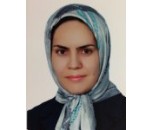
Nasrin Hooshmand
Georgia Institute of Technology, USA
Title: The Plasmonic Spectroscopy of Homo and Heterodimers of Silver and Gold Nanocubes
Biography
Biography: Nasrin Hooshmand
Abstract
Plasmonic nanoparticles made of Ag or Au received significant attention from researchers in this field as it showed unique properties when they interact with the electromagnetic radiation, primarily in the visible region. The localized surface plasmon resonance (LSPR) is an example for one such property. This results from the resonant excitations of the collective oscillations of their conduction band electrons. It well known as interparticle gaps are reduced, localized regions of intense electromagnetic fields known as “hot spots” form, which are of interest in surface-enhanced Raman spectroscopy (SERS). This is primarily due to the spatial overlap of the individual plasmonic modes, which induces the formation of hybridized collective plasmonic modes. At nanoscale separations, the hot spots produced in these composite frameworks exhibit noteworthy enhancements in Raman scattering, fluorescence, infrared absorption; which have been useful for a variety of applications. Substantial Raman enhancement can be generated, using larger aggregates experimentally. Using powerful numerical methods such as discrete dipole approximation (DDA), we can model the optical properties of the assembled silver and gold nanoparticles. We examined the changes in the nanocube surface plasmonic field distributions as the dimer separation was varied. At very short distances, the hot spot is located in between the adjacent faces and away from the corners of these faces. At larger separations, it moves towards the adjacent corners. We observed apparently anomalous behavior for the heterodimer. The E-field resulting from excitation of the Ag dominated plasmon resonance was significantly weaker than expected. The most likely explanation for these observation is that the silver plasmon mixes with the gold interband transition to form a hybrid resonance that produces weaker overall field intensity.

